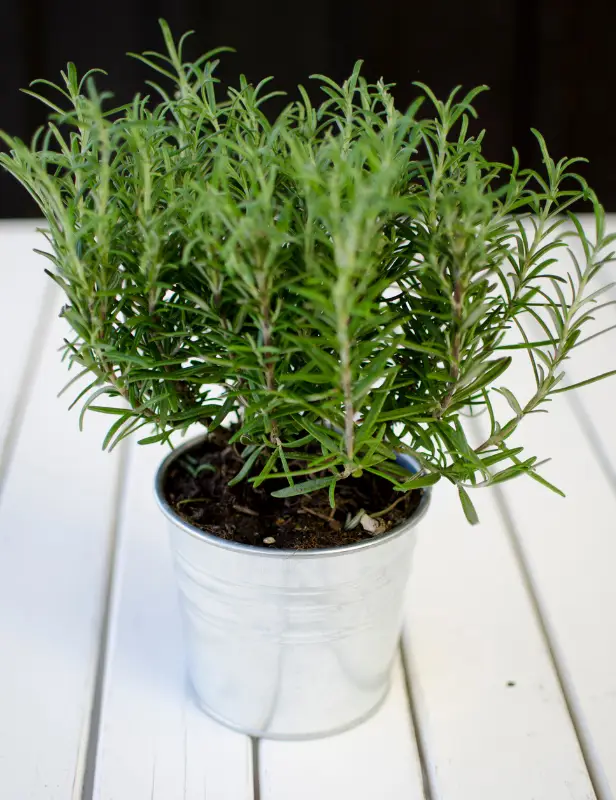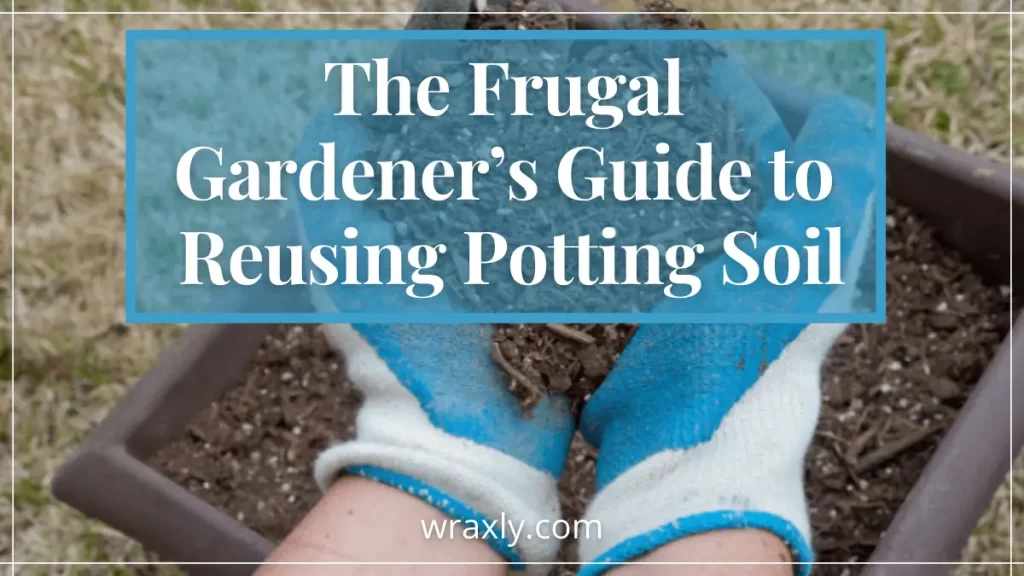Rosemary, with its fragrant needle-like leaves and culinary versatility, stands as a beloved herb in many gardens. As an experienced gardener, I understand that achieving the vibrant and thriving nature of this herb requires a delicate balance, and nothing plays a more crucial role than the frequency of watering. In this guide, we delve into the heart of successful rosemary cultivation by answering a fundamental question every gardener grapples with: “How often to water rosemary?” Join me on this journey as we uncover the key insights and practical tips to ensure your rosemary not only survives but thrives, becoming a lush and aromatic centerpiece of your garden oasis. Let’s embark on the path to mastering the art of rosemary care, unlocking the secrets that will elevate your gardening experience.

- Understanding Rosemary's Watering Needs
- Signs of Underwatering and Overwatering
- General Guidelines for Watering Rosemary
- Watering Techniques for Rosemary
- Adjusting Watering Based on Container vs. Ground Planting
- Special Considerations for Newly Planted Rosemary
- Tools and Techniques for Watering Rosemary
- Troubleshooting Watering Issues
- Final Thoughts on How Often to Water Rosemary
Understanding Rosemary’s Watering Needs
Rosemary, native to the Mediterranean region, boasts a resilient and aromatic presence in gardens worldwide. To cultivate this herb successfully, one must grasp the intricacies of its watering requirements. Rosemary’s affinity for well-drained soil and its ability to withstand dry conditions are crucial aspects that influence how often to water rosemary. The key here is understanding—understanding not only the herb’s native habitat but also the unique dynamics of your garden’s climate, the type of soil it thrives in, and whether it’s planted in the ground or in a container.
In regions where rosemary naturally thrives, it adapts to a climate characterized by hot, dry summers. Mimicking these conditions in your garden is essential for cultivating robust rosemary plants. However, the understanding of rosemary’s water needs goes beyond merely emulating its native environment; it involves a nuanced approach that considers factors such as local climate variations and the type of soil your garden provides. Let’s explore the foundation of successful rosemary care by gaining a deeper understanding of how to meet its specific watering needs.
Signs of Underwatering and Overwatering
Now that we’ve laid the groundwork for comprehending rosemary’s watering needs, it’s crucial to become fluent in the language your rosemary plant speaks when it comes to hydration. Recognizing the signs of both underwatering and overwatering is a skill that sets seasoned gardeners apart. When you think about how often to water rosemary, it isn’t just about the frequency of watering; it’s also about the quality of that hydration.

Symptoms of Underwatering:
When your rosemary is thirsty, it communicates its distress through visible cues. Wilting, especially during the heat of the day, is a telltale sign that your herb is longing for a drink. The soil around an underwatered rosemary plant tends to be dry to the touch, and the leaves may exhibit a noticeable crispiness, losing their supple texture.
Symptoms of Overwatering:
On the flip side, too much of a good thing can be detrimental. Overwatering, a common pitfall for enthusiastic gardeners, presents its own set of symptoms. Yellowing leaves, especially those lower down on the plant, can indicate that the roots are drowning. Additionally, a waterlogged soil condition may lead to root rot, a serious issue that requires prompt attention. Mold growth on the soil surface is another red flag signaling excess moisture. Understanding these signs empowers you to take proactive measures, ensuring your rosemary receives the Goldilocks treatment—neither too much nor too little, but just the right amount of water to flourish.
General Guidelines for Watering Rosemary
Now that we can decipher the messages our rosemary plants convey about their water needs, let’s explore the overarching principles governing the frequency of watering. How often to water rosemary encapsulates the essence of finding a balance that suits this resilient herb’s preferences and promotes optimal growth.

Frequency Considerations:
Determining how often to water rosemary involves a thoughtful consideration of various factors. Chief among them is your local climate. In regions with hot and arid conditions, more frequent watering may be necessary to ensure the soil remains consistently moist. On the other hand, in cooler and more humid climates, a less frequent watering schedule might be sufficient.
Seasonal Variations:
Recognizing the seasonal nuances in your garden is key to adapting your watering routine. During the active growing season, typically in spring and early summer, rosemary may demand more frequent watering to support its lush foliage. As autumn arrives and growth slows, you’ll want to adjust your watering frequency accordingly. Winter, with its reduced sunlight and lower temperatures, often requires less watering as the plant experiences a period of dormancy.
By attuning yourself to these general guidelines, you’ll navigate the delicate dance of providing just the right amount of moisture for your rosemary to thrive. Join me as we dive deeper into the specifics of watering techniques tailored to the unique needs of this aromatic herb.

Watering Techniques for Rosemary
Having established the foundational principles of rosemary watering, let’s now explore the hands-on aspect of nurturing this aromatic herb—watering techniques. How often to water rosemary extends beyond a mere schedule; it encompasses the art and science of delivering moisture to your plants in a way that fosters health and vitality.
Deep Watering vs. Shallow Watering:
One of the fundamental considerations in rosemary care is the depth at which you provide moisture to the roots. Deep watering involves saturating the soil around the root zone, encouraging the plant to develop a robust root system. Shallow watering, on the other hand, focuses on the surface layer of soil and may not reach the deeper roots. For rosemary, which boasts an extensive root network, deep watering is generally preferable. This ensures the plant receives consistent moisture throughout its root system, promoting overall health.
Watering at the Base:
Rosemary, with its needle-like leaves, benefits from a watering technique that minimizes moisture on the foliage. Watering at the base of the plant, directly onto the soil, helps prevent issues like fungal diseases that can arise when water accumulates on the leaves. This targeted approach ensures that water reaches the root zone where it’s needed most, fostering a healthy and disease-resistant rosemary plant.
As we delve into these practical watering techniques, envision yourself as a conductor orchestrating the symphony of hydration for your rosemary, creating the perfect harmony for its growth and well-being. Join me in unraveling more strategies to elevate your rosemary care to a new level of expertise.
Adjusting Watering Based on Container vs. Ground Planting
Now that we’ve explored essential watering techniques for rosemary in the garden soil, let’s shift our focus to a critical consideration for many gardeners—the distinction between planting rosemary in containers versus the ground. How often to water rosemary takes on a nuanced significance as we tailor our approach to accommodate the unique conditions of each planting method.
Container Considerations

Rosemary grown in containers requires special attention to ensure its moisture needs are met. Containers, while offering flexibility in terms of placement, can also present challenges such as faster evaporation and limited soil volume. The key here is moderation. While it might be tempting to water more frequently in containers, it’s crucial to strike a balance. The soil should be kept consistently moist but not waterlogged, preventing the risk of root rot. Choosing well-draining soil and pots with adequate drainage holes can aid in maintaining the right moisture levels for potted rosemary.
Ground Planting Dynamics
When rosemary takes root in garden soil, it taps into the earth’s natural reservoir, often requiring less frequent watering compared to its potted counterpart. The key shifts to observation. Regularly monitor the soil moisture, especially during hotter periods, and water accordingly. The aim is to establish a watering routine that sustains the plant without causing waterlogged conditions. Understanding the nuances of your chosen planting method empowers you to provide targeted care, fostering a thriving rosemary garden.
As we navigate the subtleties of container and ground planting, envision yourself as a caretaker finely attuned to the unique needs of your rosemary, whether it’s nestled in a pot on the patio or gracing the garden bed. Join me as we unravel more insights into the tailored care that sets the stage for a flourishing rosemary haven.
Special Considerations for Newly Planted Rosemary
Embarking on the journey of cultivating rosemary in your garden, whether in containers or the ground, often involves the introduction of young plants to their new environment. How often to water rosemary takes on added significance during the initial stages of your herb’s growth. Let’s delve into the special considerations for nurturing newly planted rosemary, ensuring a strong and resilient start to their botanical journey.
Watering Regimen for the First Few Months
Newly planted rosemary requires extra care as it establishes its roots in the soil. The key here is patience. During the first few months after planting, prioritize consistent moisture to help the young roots take hold. Watering frequency may be slightly higher during this establishment period, but it’s crucial to strike a balance. Aim for damp, not soggy, soil to encourage healthy root development.
Gradual Adjustment to the Garden Environment
Just as we acclimate to new surroundings, so too does your newly planted rosemary. Gradually reduce watering frequency as the plant establishes itself and becomes more resilient. This transition encourages the development of a robust root system that can better withstand fluctuations in moisture levels. The keyword now is gradual, allowing your rosemary to adapt to its environment and thrive in the long run.
By paying careful attention to the unique needs of newly planted rosemary, you lay the groundwork for a garden filled with vibrant and aromatic herbs. Join me as we continue our journey, delving into the tools and techniques that can elevate your rosemary care to new heights.
Tools and Techniques for Watering Rosemary

Armed with an understanding of rosemary’s growth stages and specific watering needs, it’s time to explore the practical side of the equation—the tools and techniques that will transform your care routine. How often to water rosemary now translates into a hands-on approach, utilizing the right instruments and methods to provide precise and effective hydration.
Overview of Watering Tools
Selecting the right watering tools is akin to choosing the right brush for an artist. Whether it’s a traditional watering can, a hose with a gentle spray attachment, or a sophisticated drip irrigation system, each tool serves a purpose. Tailor your choice of watering tool to your garden layout, the size of your rosemary plants, and your preferred watering style. Consistency in your watering routine is key to nurturing healthy and robust rosemary.
Time of Day Considerations
The timing of your watering sessions can significantly impact your rosemary’s well-being. Watering in the morning allows the foliage to dry before evening, reducing the risk of fungal diseases. This timing also ensures that your rosemary is well-hydrated as it faces the heat of the day. Avoiding midday watering prevents excessive moisture on the leaves, minimizing the risk of sunburn. Embracing a strategic approach to the timing of your watering routine enhances the overall health and resilience of your rosemary plants.
As we delve into the world of watering tools and techniques, envision yourself as a gardener equipped not just with knowledge but with the right instruments to nurture your rosemary with precision and care. Join me in the final stretch of our journey, where we troubleshoot common watering issues and explore ways to revive a struggling rosemary plant.
Troubleshooting Watering Issues
In the intricate dance of rosemary care, even the most seasoned gardeners may encounter challenges. How often to water rosemary is not just about a set schedule; it’s about responding to the ever-changing needs of your herb. Let’s delve into the common watering issues you might face and unravel the solutions that will keep your rosemary thriving.
Addressing Common Problems
Understanding the language of your rosemary plant is essential when troubleshooting watering issues. If you notice wilting despite regular watering, it might be a sign of underwatering or poor soil drainage. Adjust your watering schedule and ensure the soil allows water to reach the roots effectively. On the flip side, if your rosemary exhibits yellowing leaves or shows signs of root rot, overwatering might be the culprit. Allow the soil to dry out between watering sessions and consider improving drainage.
How to Revive a Struggling Rosemary Plant
Even the most resilient plants can face setbacks, but with attentive care, you can revive a struggling rosemary. Start by identifying the root cause—whether it’s overwatering, underwatering, or environmental stress. Trim any damaged or diseased parts, adjust your watering routine accordingly, and consider supplementing with a well-balanced fertilizer to boost recovery. The key is to act promptly and provide the necessary support to help your rosemary bounce back to its aromatic glory.
By troubleshooting watering issues with a proactive and observant mindset, you’ll become a guardian of your rosemary’s well-being.

Final Thoughts on How Often to Water Rosemary
In the intricate world of rosemary cultivation, mastering how often to water Rosemary unveils a harmonious blend of art and science. From understanding the herb’s native habitat to implementing specific watering techniques, you’ve acquired the knowledge to nurture vibrant and aromatic rosemary plants.
As your journey in gardening persists, embrace the evolving nature of this delicate art. Your role as a steward extends beyond routine care; it involves a continuous dialogue with your rosemary, responding to its needs with curiosity and adaptability. May your garden be filled with the flourishing beauty of well-nurtured rosemary and may the joy of tending to these aromatic wonders be a source of inspiration throughout your gardening endeavors. Happy cultivating!

Darrell has a passion for gardening that he inherited from his father. Go here to read more about the influence his father played in his love for gardening. If you want to send Darrell a quick message, then visit his contact page here.



![10 Common Container Garden Mistakes to Avoid [Beginner’s Guide]](https://wraxly.com/wp-content/uploads/2021/02/10-Common-Container-Garden-Mistakes-to-Avoid-Beginners-Guide-1200-1024x576.webp)